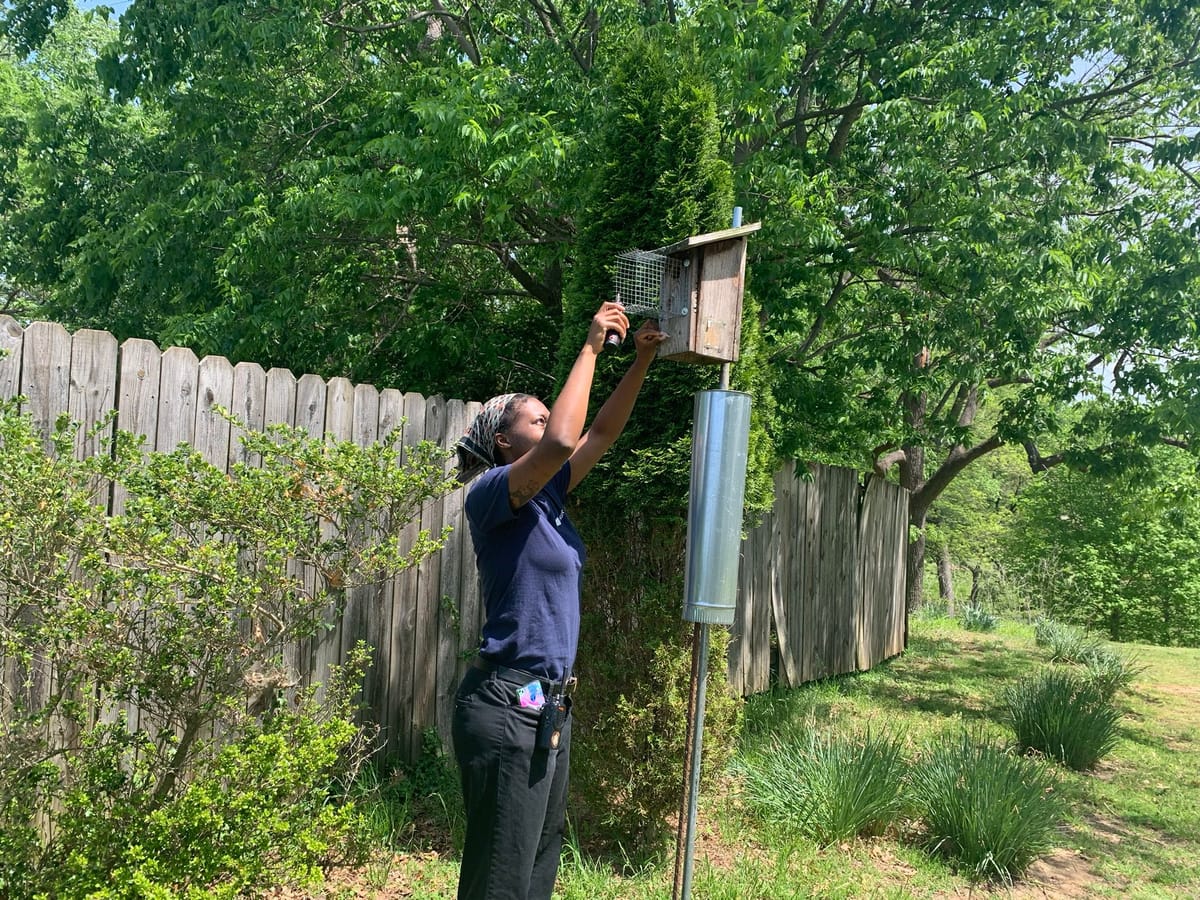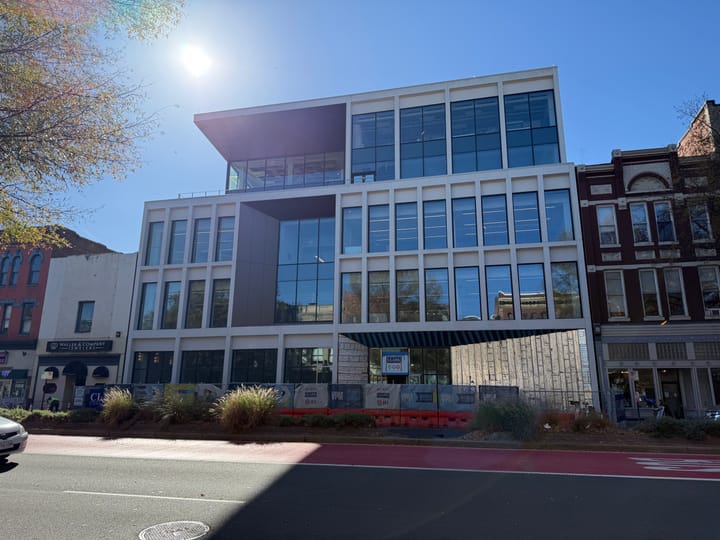Bluebird boxes are helping reverse a decades-long decline

The flashes of blue are a common sight now, but that almost wasn't the case.
The Eastern bluebird was once moving toward extinction in the early 20th century, but thanks in part to bluebird trails and their monitors, they have recovered.
The pathways have special nesting boxes designed to help increase the bluebird population, and in the Greater Richmond Region there are several of them, including at Bryan Park.
Situated in Northside, the park features 14 boxes spaced out over two miles that are monitored by volunteers, like Carla Davis. “Starting in March when bluebirds start actively nesting I will go over once a week and will open each box,” said Davis, who also oversees Henrico bluebird trail monitors. “I walk around the park with a bucket and tools and I make sure boxes are in good condition.”
One of Davis’ most crucial tools is a notebook used to record data like nesting activity, eggs laid and any fledglings. This data, as with other bluebird trails, is sent to the Virginia Bluebird Society at the end of the active season (mid-March to August). A good year for Davis will be around 70-80 fledglings.
“My job as a monitor is really just to help bluebirds have the best successful brood,” says Davis. “Bluebirds need a helping hand and that’s what a trail monitor does.”
At Maymont, a bluebird trail runs along the northeastern portion of the grounds between the farm and the Robins Nature Center. Created in 2021, the pathway features four boxes that a handful of volunteers diligently care for.
“Bluebirds like nest cavities in trees but prefer box nesting,” said educator Joanne Sims, who oversees the program. “Certain boxes are preferred each year,” she added.
Volunteers are trained and equipped with a kit Sims curated that includes equipment like an informative guide, step stool, screwdriver and a tilted mirror, which is used to non-invasively check the nest for eggs.
“[Eastern bluebirds] are here year after year,” said Sims. “There’s definitely an increase.”
At Pocahontas State Park, 52 nesting boxes are split between Trail A and Trail B. Roz Stein, a Virginia master naturalist, has been monitoring boxes at the park since 2018 and recently became the lead for Trail B. Over the years, Stein has observed many intriguing things about bluebird habits.
“The female will lay one egg a day until [a clutch] is finished - typically 4-6 eggs,” said Stein. Once the incubation starts, all will eventually hatch together about two weeks later.
But plenty more monitoring initiatives are growing throughout the region, like at Petersburg National Battlefield. About 15-20 bluebird boxes are placed throughout the Eastern Front Unit. The program took a bit of a pause but biologist Jarrett Wansley is working to restart it.
“The park had been participating with bluebird box monitoring well before I arrived as the biologist which was in 2023,” he said. “When my predecessor retired there was a small gap where they didn't have anyone to keep up with it. That is why we are attempting to get things rolling again.”
Bluebird monitoring can be fulfilling but time-consuming and intricate. Monitors must dedicate at least once a week to checking their assigned box(es) throughout the active season. They also must make sure to not disrupt nests, using techniques like gently tapping around the exterior to listen for any friends inside before opening the box up.
Because bluebirds build about three nests each year, volunteers typically remove old ones to prevent them from piling up toward the entry hole and making the birds susceptible to predators, like snakes and raccoons.
Those two creatures are why baffles are installed around the bottom and small wire guards at the entryways which stop them from getting inside. European starlings and house sparrows can also be a problem as they aggressively steal bluebird boxes and can harm eggs.
Apart from this, insects can be a nuisance. Sims brushes petroleum jelly and dish soap on the sides to stop wasps and some, like Davis, might even use a little diatomaceous earth to thwart ants.
Eastern bluebirds almost went extinct by the 1970s due to habitat loss, pesticide use and invasive avian species. The mission to save them took off in the '60s as bluebird trails started becoming established — something that significantly boosted their population to what is now about 23 million.
This increase isn’t only great for birders, but local ecosystems as well. Bluebirds have a voracious appetite for bugs, like grasshoppers and mosquitoes, which can help control their numbers.
But even with this comeback, spreading awareness is still critical to ensure their survival. “It’s not uncommon someone will stop and ask me what I’m doing,” said Davis. “They don’t know what a bluebird box or trail is…they [have seen these birds] but aren’t familiar with them.”
A bluebird box can also make a great addition to a schoolyard, golf course or one’s yard. Even just incorporating native plants in a garden can be a huge help. “[Native plants] support native insects,” says Stein. “Songbirds nesting need a lot of caterpillars to feed their young which are easy to digest and have high nutrition.”
Being a bluebird monitor can be a months-long investment, but for many, it’s all worth it to hear this bird’s distinct song and see their vivid cerulean plumage gliding through trees and gardens - a marvel once almost lost forever.
The Richmonder is powered by your donations. For just $9.99 a month, you can join the 1,000+ donors who are keeping quality local journalism alive in Richmond.






